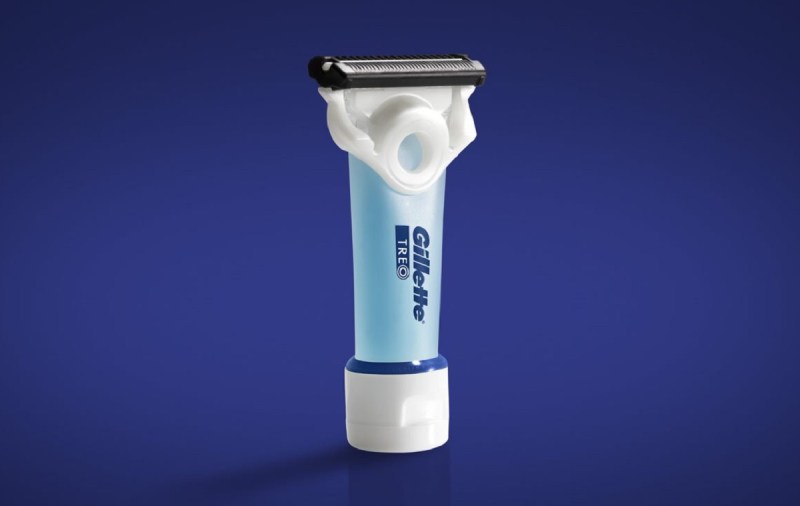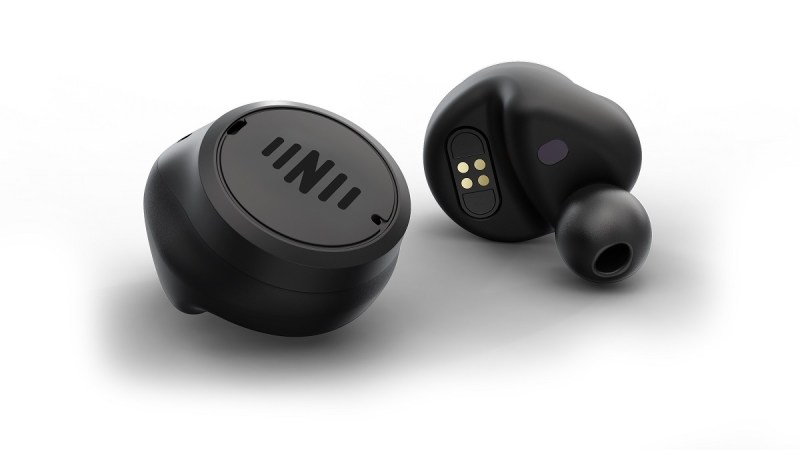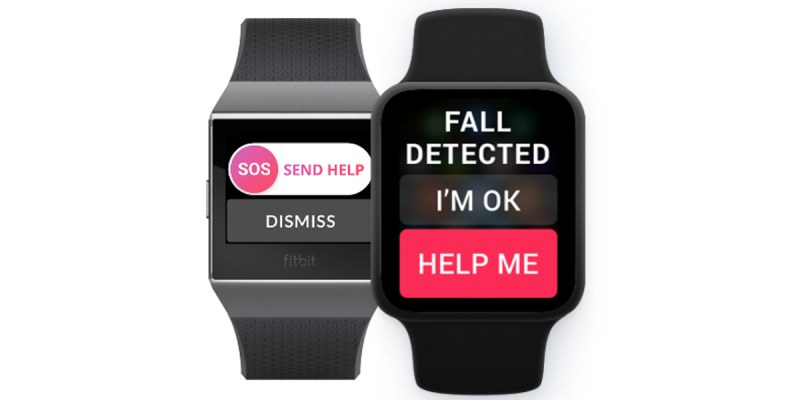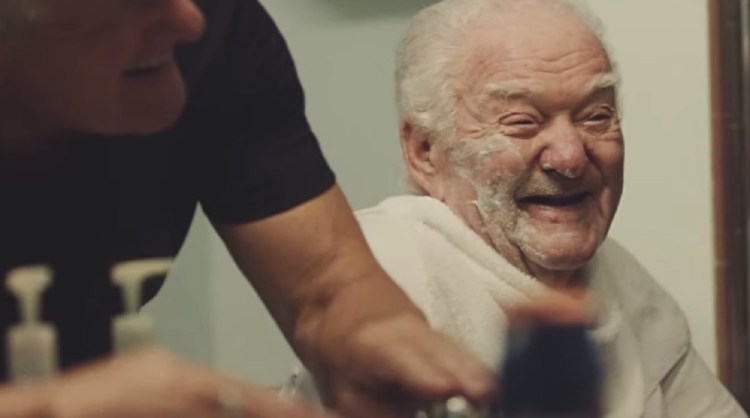At CES 2020, tech’s biggest trade show, it was heartening to see that the tech industry is paying attention to the needs of the elderly and the younger people who provide care for the elderly.
I’ve paid attention to this since my 86-year-old mother has severe dementia and lives in a memory care home in Silicon Valley. For years, I couldn’t find any technology that she could handle or that could make my life easier. But I’m happy to see that many tech companies now get it. Our generation is about to be overwhelmed with caregiving tasks for the elderly, and we need some help.
CES 2020 had 2.9 million square feet of space and 4,500 exhibitors in Las Vegas. Most of the tech for the elderly was in the health and wellness marketplace in the Sands Expo, which was up 25% in exhibitors and 15% in square footage.
“The role technology will play in health monitoring and self-treatment is already in great demand for eldercare and to anyone that needs to keep track of their health,” said Tim Bajarin, an analyst at Creative Technologies who has attended 50 CES events over the decades, in an email. “It will be one of the more important growth markets in tech in the next 20 years.”
June 5th: The AI Audit in NYC
Join us next week in NYC to engage with top executive leaders, delving into strategies for auditing AI models to ensure fairness, optimal performance, and ethical compliance across diverse organizations. Secure your attendance for this exclusive invite-only event.
I noticed the trend at CES 2019, and what was different compared to the past is that it wasn’t just startups with attentive CEOs who were coming up with these products. Big companies were paying attention as well to the human side of technology, from sex tech to mom products. And it makes sense.
The elderly are a big market

Above: Samsung’s Ballie can offer alerts for senior caregivers.
The American Association of Retired Persons said in “2019 Tech Trends and the 50+” that 115 million Americans over 50 represent an enormous market for technology and that by the end of the next decade this group is projected to spend $84 billion on tech products.
One of the problems is that technologists have been designing cool products that don’t resonate with older people. Jitterbug created its retro cell phones because fancy products like the iPhone just weren’t designed for older people. And some of the products also weren’t designed with much younger caregivers in mind either.
“Social robots have struggled to find a home in recent years,” said Steve Koenig, vice president of market research at the Consumer Technology Association, in a press briefing. “If you have an aging loved one at home, you want the peace of mind to know that their medication was dispensed. Treating people, like seniors with Alzheimer’s, requires a focus on the human-machine interaction.”
Apple didn’t appear at the show, but its Apple Watch and iPhone products keep adding new capabilities for detecting health problems, such as atrial fibrillation (via ECG), a life-threatening condition caused by an irregular heart rate. (I used my iPhone/Apple Watch to figure out that I walked 37 miles at the show.)
The media also did a better job focusing on stories about the elderly and caregivers.
Designing with caregivers in mind

Above: Gillette Treo is designed for caregivers.
Procter & Gamble showed off the Gillette Treo, a razor that is designed for a caregiver to shave an elderly person. In all of its 182-year history, P&G’s Gillette brand has never created a razor for someone to shave someone else. One of its features is that it has a tube filled with shaving cream that you can dispense while you’re shaving someone, so you don’t have to go get a can of shaving cream.
“The overall objective is to bring to life the product innovation and the human insight that we’re bringing to show consumers,” said Guy Peri, vice president and chief data & analytics officer at P&G Information Technology, in an interview with VentureBeat.
And Samsung digital health vice president Natalie Schneider spoke alongside Jo Ann Jenkins, AARP CEO, on the topic of the “longevity economy” in a talk at CES. The idea is that companies can profitably target the elder generation, which is about to become a huge population as the baby boomers retire. The AARP also showcases the wares of seven healthcare startups at its booth at CES.
Samsung itself had its Ballie rolling robot, which can detect a fall in a home and roll over to ask the person if it should call 911.
One of the winners at Last Gadget Standing, one of the big awards contests at CES, was MedWand, a handheld medical testing device created by Samir Qamar and his team. MedWand is a small connected device with a camera. The four-ounce device can perform 10 different tests, including heart rate, temperature, and electrocardiogram (ECG). It is targeted at people in homes, hospices, and eldercare facilities and enables them to share exam results remotely with their doctors in real time.
Withings introduced the new ScanWatch that checks for sleep apnea and also takes ECG readings. And Omron Healthcare is now selling its FDA-cleared wearable blood pressure monitor for $500.
Improving hearing aids

Above: Nuheara’s IQbuds2 Max lets you personalize your soundscape.
Since the U.S. revised its laws regarding hearing aids, a lot of change has been happening in that market. You no longer have to go to an audiologist to purchase hearing aids, and that is expected to bring the price down. (I paid $5,000 for my mother’s hearing aids from Hearwell.)
I used Nuheara IQbusd2 Max earbuds to listen to people speaking to me at different parties at CES. It worked pretty well, and made me notice that, even though my hearing is pretty good, devices like these $400 earbuds can help me hear better in challenging environments such as parties or restaurants.
Zvox is also seeking to bring down the cost of hearing aids with app-enabled hearing aids. And Phonak, a hearing aid brand owned by the Swiss company Sonova, actually took molds of my ears to create custom hearing aids. The latter is an example of a traditional hearing aid maker moving to the high end to provide better quality at a higher price. Its Virto Black hearing aids aim to deliver customized hearing solutions that are far above what others can do in quality.
Designed with human interests at heart

Above: Buddy detects if an elderly person falls and helps get aid.
LiveFreely announced Buddy, a software-based system for wearables to help detect falls and notify caregivers or 911 of an emergency. It was created by brothers Arthur and Daniel Jue, who faced personal challenges in taking care of their own parents.
In an interview with VentureBeat, CEO Arthur Jue said their father had a stroke on Valentine’s Day in 2009. He had told the family to go to a dinner event without him and said he was going to lie down. They offered help, but he declined. When they returned, they found he had had a stroke and couldn’t move. They had to carry him to the car and take him to the hospital.
Ejenta is working on a system for remote health care, collecting biometric data from a variety of sources such as smart clothing or phones. It is modeled after a program designed by NASA for astronauts.
Boston-based Loro created an assistant in the form of a parakeet that rests on the shoulder of a wheelchair user. It is like an extra set of eyes, trained to recognize objects. It also has a tablet that helps someone communicate if the person cannot do so on their own.
Vayyar also had a second, less expensive and more compact version of its fall detection sensor. And Smardii showed off a connected diaper.
CarePredict has a wearable that tracks things like sleeping, walking, and vitals. It is also working on AI to detect problems such as depression.
Japan’s Xenoma created e-skin, or pajamas for elderly people. These have sensors to detect vitals and sleep patterns, as well as falling.
Tivic won one of the Innovations Awards for treating allergic rhinitis. Reliefheat.com had a portable heating pad controlled by Bluetooth and an app that would be great for caring for seniors who have back pain. Dexcom and Freestyle showed off continuous glucose monitors, which are helpful for people with diabetes.
“I use the Dexcom CGM, and it is the most important health-tracking tool I have,” Bajarin said.
Smart homes to help the elderly live where they are
The ambition behind technology for eldercare is growing. Akio Toyoda, CEO of Toyota, noted in his press event at CES that elderly people can receive better care in a place like Toyota Woven City, a connected community that the company is building on a former Toyota factory site.
Technis uses sensors to create smart floors, detecting how seniors are moving in the house and how often they use the bathroom. It also monitors how fast they are moving and uses AI to detect abnormalities that are worth alerts.
Papa also provides a service where older people can essentially rent grandkids, or young people who can serve as companions, tech fixers, and helpers.
K4Connect has created K4Community for senior living communities. It is built on an operating system that allows for the integration of biometric health devices and data, smart home automation, voice technology (such as Amazon’s Alexa), and communication devices (of any brand, make, or model). The aim is also to help the elderly population live more independently, both more safely and healthier, for longer periods of time.
And Sekisui had an ambitious “platform house concept,” which would allow seniors to live independently for a longer time while being monitored closely. Working with MIT, the Sekisui House uses ceiling sensors to monitor a person’s heart rate. It will call for help and unlock the doors for emergency crews if someone is in trouble.
I can appreciate these advances. When my mother broke her wrist recently, she wasn’t wearing her wrist band. So the caregivers at the home didn’t realize she had fallen for a while.
I took her to see a bone doctor. He had her put her wrist on a platform, and we were immediately able to see an X-ray of the fracture. He didn’t have to develop the film or wait for the X-ray to be processed. It was visible in real time, and that helped us get out of the doctor’s office as fast as possible.


